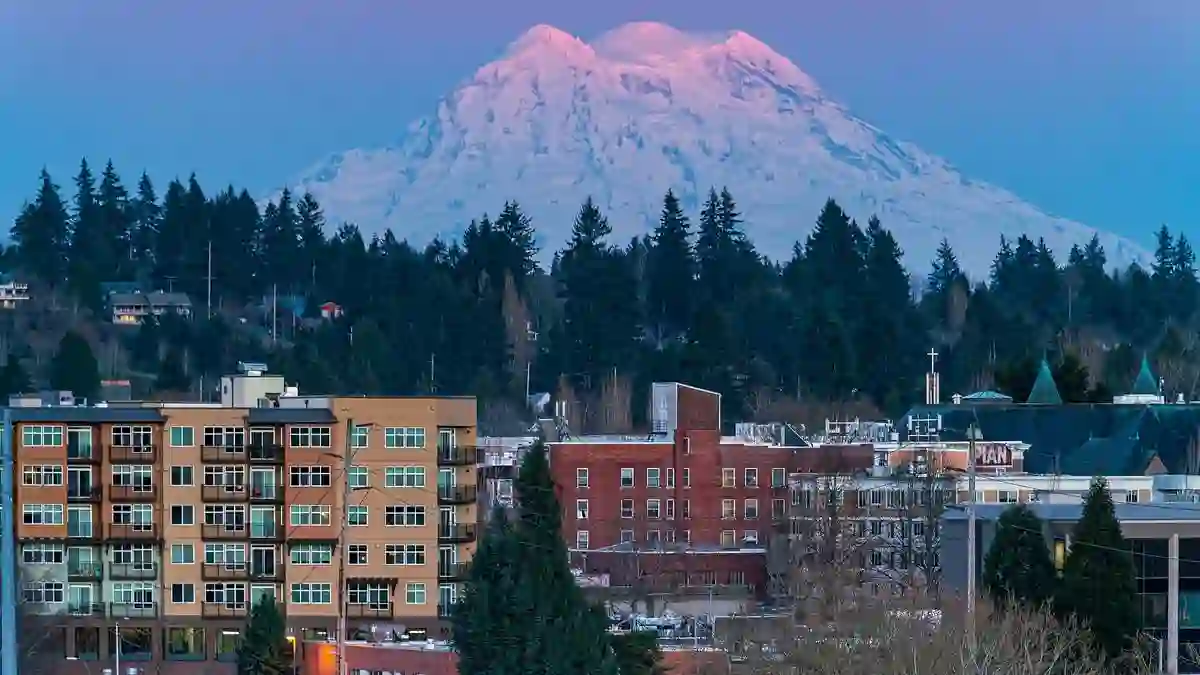It started quietly in the early hours of the morning—but for scientists and nearby communities, the signs were loud and clear.
Mount Rainier, the massive volcano looming over parts of Washington State, started shaking again.
This time, it wasn’t just one tremor. It was hundreds of tiny earthquakes, clustered under the mountain’s summit, raising eyebrows and reigniting concerns that this sleeping giant might be stirring.
Dozens of Quakes Hit Before Sunrise
At around 4:29 a.m. Eastern Time on July 8, seismic instruments picked up a swarm of small earthquakes rattling beneath Mount Rainier.
According to the US Geological Survey (USGS), none of them topped 1.7 in magnitude, but that wasn’t the point.
What made this swarm unusual was its size and timing.
The quakes struck at shallow depths between 1.2 and 3.7 miles beneath the summit—close enough to raise concern—and it turned out to be the largest earthquake swarm at Mount Rainier since 2009.
USGS Keeps the Alert Level at Normal
Despite the activity, USGS officials have tried to keep panic at bay.
In a statement, they noted that the current instruments showed no unusual ground movement and that nothing out of the ordinary had been detected through infrasound monitoring either.
In other words, Mount Rainier hasn’t shown signs of erupting just yet.
But that doesn’t mean it’s not on scientists’ radar—far from it.
A Volcano Known for Sudden and Violent Outbursts
Even though it hasn’t had a major eruption in over a thousand years, Mount Rainier remains one of the most closely watched volcanos in the country, and for good reason.
Experts say it’s only a matter of time before it erupts again—and when it does, it’s not lava or ash clouds that pose the biggest threat. It’s the lahars.
Lahars Are the Real Danger
Lahars are powerful, fast-moving mudflows made of volcanic debris, water, and melted ice.
They’re especially dangerous because they can sweep through entire towns in minutes, carrying away everything in their path—buildings, trees, cars, even people.
Jess Phoenix, a volcanologist and science communicator, put it bluntly: “Mount Rainier keeps me up at night.”
That’s because cities like Tacoma and South Seattle sit right on top of ancient lahars—meaning if the volcano lets loose again, those communities could be in immediate danger.
Lahars Don’t Always Wait for an Eruption
Here’s the scary part: Mount Rainier doesn’t even need to erupt for a lahar to happen.
Sometimes, these mudslides are triggered by heavy rain or slow weakening of the mountain’s slopes. And once they start, they move fast.
History offers a chilling example. In 1985, the Nevado del Ruiz volcano in Colombia erupted and caused a lahar that wiped out the town of Armero, killing around 25,000 people.
It’s still considered one of the deadliest volcanic disasters on record.
And closer to home, the 1980 eruption of Mount Saint Helens—only 50 miles from Rainier—produced a massive lahar that destroyed over 200 homes and took 57 lives.
Communities Are Preparing for the Worst
Because of the threat Mount Rainier poses, scientists have been working for years to get ahead of the danger.
Over the past two decades, they’ve expanded the Mount Rainier Lahar Detection System, placing sensors and monitors along likely mudflow paths like the Tahoma Creek and Puyallup River areas.
When the system first launched in 1998, its technology couldn’t offer real-time alerts.
But today, upgraded sensors provide much faster warning times—crucial when every minute counts in an evacuation.
The Largest Lahar Drill in History
Emergency preparedness isn’t just happening in labs and monitoring stations—it’s happening in classrooms and neighborhoods too.
On March 21, 2024, more than 45,000 students took part in what became the world’s largest lahar evacuation drill, practicing what to do if Mount Rainier erupts.
These drills, combined with new monitoring technology, could be the key to saving lives when—and not if—this volcano erupts.
The Takeaway for Washington and Beyond
Mount Rainier’s recent earthquake swarm isn’t a cause for immediate panic, but it’s a sharp reminder of the mountain’s potential to cause catastrophic damage.
It’s the kind of event scientists watch closely—not just to predict the next eruption, but to make sure communities are ready.
As the USGS put it: the volcano’s alert level may still be “normal,” but the risk is anything but small.
The shaking might stop, but the mountain never really sleeps.



